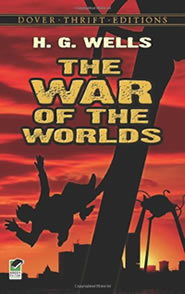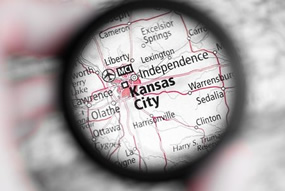 As also posted on Yale Books Unbound: http://blog.yupnet.org/2014/10/30/orson-welles-war-of-the-worlds
As also posted on Yale Books Unbound: http://blog.yupnet.org/2014/10/30/orson-welles-war-of-the-worlds
October 30, 1938. The night before Halloween in America. After dinner, at 8:00 in the evening, Eastern Standard Time, families throughout the country gathered in their living rooms, as they usually did, to listen to the radio. At that hour, the highest-rated show on the radio was NBC’s Chase and Sanborn Hour, starring Edgar Bergen and his two celebrated puppets, Charlie McCarthy and Mortimer Snerd. (American audiences did not seem bemused by the idea of a ventriloquist performing on the radio despite their inability to see whether or not his lips moved.)
When a musical interlude interrupted the comic dialogue between Bergen and Charlie, many listeners apparently switched the radio dial to CBS. Instantly, they found themselves in the midst of hysterical news bulletins describing a battalion of Martians landing in New Jersey. Given that Americans were now accustomed to, if no less unsettled by, constant news reports on the radio of crises in Europe and warfare in China, the Martian invasion sounded credible. And some in the audience, especially in New Jersey and New York, panicked.
What the audience really heard was a dramatization by The Mercury Theater on the Air of H.G. Welles’s 1897 novel, The War of the Worlds. The program was conceived, directed, and narrated by a 23-year-old former magician and current theater actor, Orson Welles. Already labeled a “boy genius” for his modernist versions of Shakespearean plays in New York, featured on the cover of Time magazine and profiled in the New Yorker, Welles created in his rendition of The War of the Worlds what became the most legendary radio broadcast in the history of the medium. Three years later, in 1941, Welles directed, co-wrote, and starred in another illustrious venture, this time in Hollywood: Citizen Kane, the most influential movie in the history of the American cinema.
At the end of his own movie, Radio Days (1987), Woody Allen remarks mournfully: “I’ve never forgotten. . . any of the voices we would hear on the radio. Though the truth is, with the passing of each [year], those voices do seem to grow dimmer and dimmer.” The golden age of network radio was brief. It lasted for only twenty-five years, from the mid-1920s when the NBC and CBS networks were launched, to the end of the 1940s when television supplanted radio as the principal form of household entertainment.
But for those Americans who grew up during the Depression or World War II, network radio was indispensable. NBC and CBS offered an array of programs: comedies, adventure series, mysteries, dramas, classical music, jazz, and news. The stars on radio, besides Edgar Bergen, included Jack Benny, Bob Hope, Arturo Toscanini, Benny Goodman, and Edward R. Murrow, among many others. Only the movies were more popular, and more important, during these years. Orson Welles became a master of both mediums.
Like many of his predecessors in America’s culture—Mark Twain, Charlie Chaplin, Ernest Hemingway—Welles was an entertainer as well as an artist. He did not share the elitist preconceptions of his European counterparts. Instead he understood that art in America had to attract and enthrall audiences before they could be enlightened or encouraged to see the world differently. He was steeped in the European traditions of literature and painting, but he used these to become a virtuoso of American mass culture.
Welles had one other attribute that distinguished him from his American and European forbears: his magisterial voice. Whether on stage, on the radio, or in the movies, Welles realized that his voice could beguile an audience—as it did in his narration of The War of the Worlds, in his portrait of both the charismatic young Charles Foster Kane and in Kane’s King Lear-like old age, and in his captivating portrait of the amoral Harry Lime in The Third Man (1949). In fact, Welles had all the wittiest dialogue, some of which he wrote himself, in The Third Man, including the most memorable lines in the film: “In Italy for thirty years under the Borgias they had warfare, terror, murder, and bloodshed, but they produced Michelangelo, Leonardo da Vinci, and the Renaissance. In Switzerland they had brotherly love—they had five hundred years of democracy and peace, and what did they produce? The cuckoo clock.”
At that moment in the movie, as in Citizen Kane and The War of the Worlds, Welles was the enchanting magician and raconteur, the global celebrity who could terrify and mesmerize audiences, while also making them ultimately laugh at their naïveté. He was a wizard at intuiting what his audiences feared and needed.
Since 1938, we have confronted a plethora of evil Martians. Nazis, Communists, sandal-clad revolutionaries, terrorists. From Pearl Harbor to the erection of the Berlin Wall to the jungles of Vietnam to the destruction of the World Trade Center, we have been engaged in a perpetual war of the worlds. So, in America, as Orson Welles recognized, it is always Halloween.
